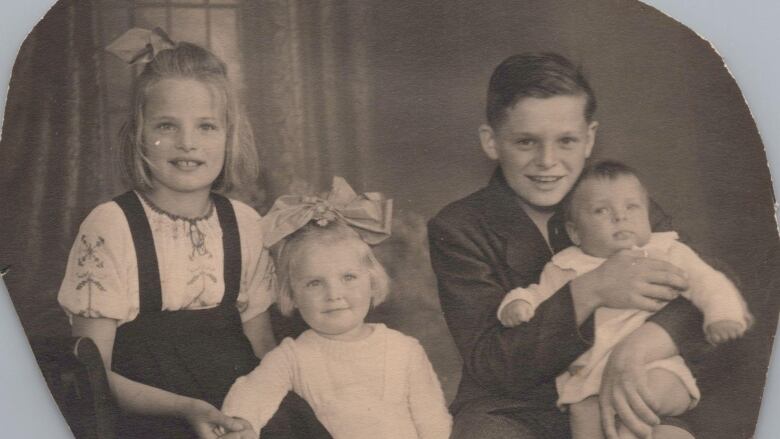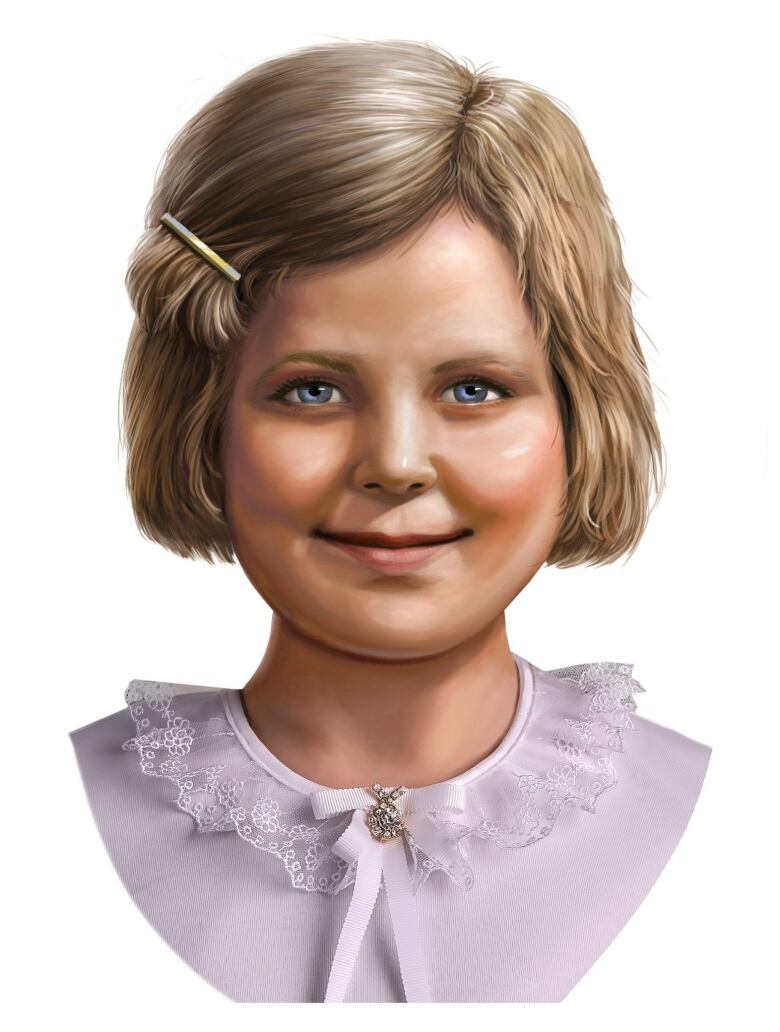Nearly 70 years ago, a teen went missing in Montreal. Her family is still looking for her
Technology, like DNA identification and A.I., offers hope of finding answers

Vera Hastie has held onto her missing big sister's old purse, prayer book and jewelry for nearly 70 years.
Two months after the Dderlein family arrived in Quebec from Germany in September 1954, Hastie's 14-year-old sister Rosemarie went to get bread from the bakery and never came back.
Hours later, when Rosemarie still hadn't returned from thebakery just acouple of blocks away from their home in Notre-Dame-de-Grce, her father went looking for her. The baker told him he had never seen the girl.
It was as if she had vanished.
The family started a search which has never stopped.
"One time I came home, and I put my head in my mother's lap, and I just cried, cried, cried. 'Where's my sister? I miss my buddy, my pal,'" said Hastie, who was 11 at the time.
The family had several theories of what could have happened to the teen black market adoption, child or sex trafficking, kidnapping but never got answers.
Every single night, the family would walk around the neighbourhood, looking for Rosemarie.
Thinking she mighthave ended up in the United States, Hastie would stop at every phone booth on her travels and write "Rosemarie, call this number" in the hopes her sister would see.

Now 79, Hastie was encouraged by her daughter, Christa, to take up the search again using new technology like DNA identification and artificial intelligence.
They pored over newspaper clippings and obituaries, researched what was happening in Notre-Dame-de-Grce back in 1954, and called the families of those with the same name as Rosemarie hoping to find answers. But they found nothing.
The two took to social media to share Rosemarie's story and reach out for help.
They say thousands of people messaged them from all over the world. Some reached out to wish her the best orsent prayers, others edited photos to make them clear, translated documentsor referred them to genealogy and DNA testing websites.
"It brings me to tears every day, the kindness everybody has shown my mom and our family," saidChrista. "My mom has made great new friends."

Jan Guppy runs a facebook page called Unidentified Human Remains Canada with the goal of connecting families of missing people with their loved ones.
She said she tries to post every day and her audience has grown to almost 25,000 people. Families who think their loved ones could be among the unidentified come to her for help so she can connect them to organizations and resources working with DNA testing and forensics.
Though the group is called Unidentified Human Remains Canada, Guppy hopes to find missing loved ones alive.
Hastie found Guppy's page and sent her Rosemarie's information. Guppy said because the case was nearly 70 years old the oldest case she's worked on she turned to a forensic artist who uses artificial intelligence and family photos to create age progression pictures.
From there, Guppy reached out to other organizationslike the Aware Foundation to create flyers, posters and share the info with thousands of people, in the hope someone will recognize Rosemarie.
"If I saw [my sister] walking down the street, would I know her? No, I remember her face from when she was 13," said Hastie.

Guppy said when such long-term cases go public, a photo of the missing person as a child is ineffective and age progression technology is vital.
"It's an emotional roller coaster but these people need help, need assistance, need awareness, need the word spread, so I will do whatever I can to help them out," said Guppy. Even when stories have a sad ending, the families get closure, she said.
Christa Hastie is a mother of four herself and saysshe feels very connected to her mother's side of the family.
"I don't know how anybody could deal with a child that goes missing. I don't know how you can even live and exist on a daily basis without feeling guilty and sad and horrible," she said.
A Montreal police spokesperson said as long as a missing person's file isn't closed it stays "pending," and if more information becomes available it will be investigated.
Technology brought Hastie and her daughter new hope. They found a girl whose DNA was a close match and could possibly be Rosemarie's granddaughter, though they know nothing about her or her family.
"My mom kept her things in the hopes that one day she would knock on her door and she could say, 'here's your stuff!'" said Christa.
with files from Matt D'Amours












_(720p).jpg)


 OFFICIAL HD MUSIC VIDEO.jpg)
.jpg)



























































































